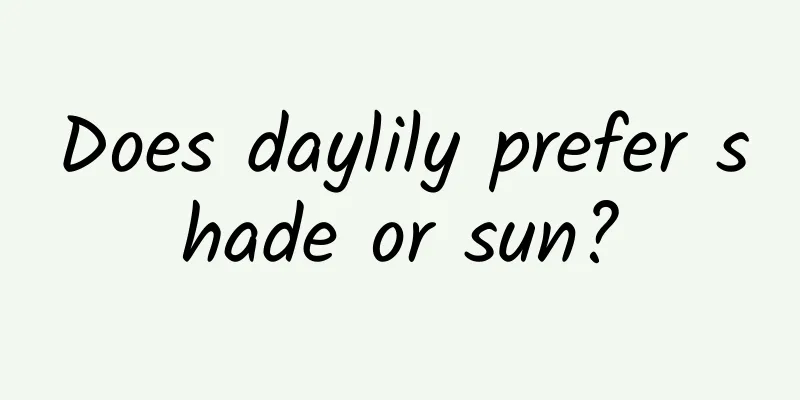Hydrangea cultivation tips and precautions

|
Hydrangea is a very popular ornamental flower with large, beautiful flowers in rich and varied colors. The flower language is "hope", "reunion", "happiness" and "romantic love". It is often used in weddings, holiday decorations or as gifts. The following are some tips and precautions for growing hydrangeas. 1. Soil selection Hydrangea grows best in loose, fertile, well-drained, slightly acidic soil (pH about 4.5-6.0). You can mix leaf mold, garden soil and river sand in a ratio of 4:3:3. When potted , it is recommended to change the pot and soil every 1-2 years. 2. Lighting management Hydrangeas prefer a semi-shady environment and can be placed in a sunny place in spring and autumn, but avoid direct sunlight. It needs to be shaded in summer and placed in a place with scattered light, such as under the shade of a tree or under a shade net. The lighting time can be appropriately increased in winter. 3. Watering tips Hydrangeas like moisture but cannot tolerate waterlogging. The soil needs to be kept moist during the growing season, and the frequency of watering needs to be increased during the high temperatures in summer. Water the plant once in the morning and evening every day, and spray water on the leaves to keep them moist. Reduce watering in winter and keep the soil slightly moist. 4. Fertilization method Hydrangeas like fertilizer, so apply a thin layer of organic fertilizer every 15 days during the growth period. During the flower bud differentiation period, phosphorus and potassium fertilizers can be added to promote flower bud differentiation. When applying fertilizer, be sure to apply thin fertilizers frequently to avoid burning the roots with thick fertilizers. 5. Pruning and shaping Cut off the remaining flowers in time after flowering to reduce nutrient consumption. Prune dead branches, weak branches and overcrowded branches to keep the plant well ventilated and well-lit. Proper pruning can be done in early spring to cut off withered or frostbitten branches. 6. Reproduction method Cuttings are commonly used for propagation. In spring or autumn, select semi-lignified branches, cut them into 10-15 cm long cuttings, insert them into loose substrate, keep moist, and they will take root in about 1-2 months. Propagation by division can be carried out in early spring in combination with repotting. 7. Notes The suitable temperature for hydrangea growth is 18-28℃, and the temperature in winter needs to be kept above 5℃. In cold areas, it needs to be moved indoors for the winter. Common pests and diseases include powdery mildew, leaf spot and aphids. The environment needs to be kept clean, ventilated regularly, and pests and diseases must be detected and dealt with in a timely manner. In addition, the color of hydrangea flowers can be changed by adjusting the pH of the soil: the flowers are blue in acidic soil and pink in alkaline soil. Aluminum sulfate can be added to the soil to increase acidity, or lime can be added to increase alkalinity.
|
<<: Amaryllis cultivation techniques and precautions
>>: Cultivation techniques and precautions for the lucky tree
Recommend
How to make a bridal bouquet
1. Make a bouquet model After choosing the materi...
When and how to plant foxglove
Foxglove planting time Foxglove can be sown in th...
What are the legends and meanings of sage?
1. The meaning of sage flower language 1. Kindnes...
What to do if the leaves of Phoenix bamboo turn yellow
1. Too much light 1. Reason: Phoenix bamboo likes...
How to maintain white moss and keep it green
Growing conditions of white moss White-haired mos...
Cultivation time of Polygonatum sibiricum
Polygonatum sibiricum is a traditional Chinese me...
The grafting method with the highest survival rate
1. The grafting method with the highest survival ...
What to do if the leaves of Cyperus rotundus turn yellow
Reasons for yellowing leaves In fact, it is inevi...
What flowers are suitable for growing in Luliang? What are the city flowers and trees?
1. Climate characteristics of Luliang Luliang has...
The difference between beauty plum and elm leaf plum
1. Different leaves The Beauty Plum is a hybrid v...
Can lychees be grown in Jiangsu?
Can lychees be grown in Jiangsu? Litchi cannot be...
How to propagate lucky grass
1. Time Selection Generally speaking, we choose t...
How to grow Aspidistra
1. Breeding environment (1) Soil: The requirement...
How to cultivate red sandalwood to make it grow fast and beautiful
Rosewood Growth Conditions Red sandalwood loves s...
When to plant colored calla lilies and how to prepare the soil
1. Planting time Planting of colored calla lilies...









